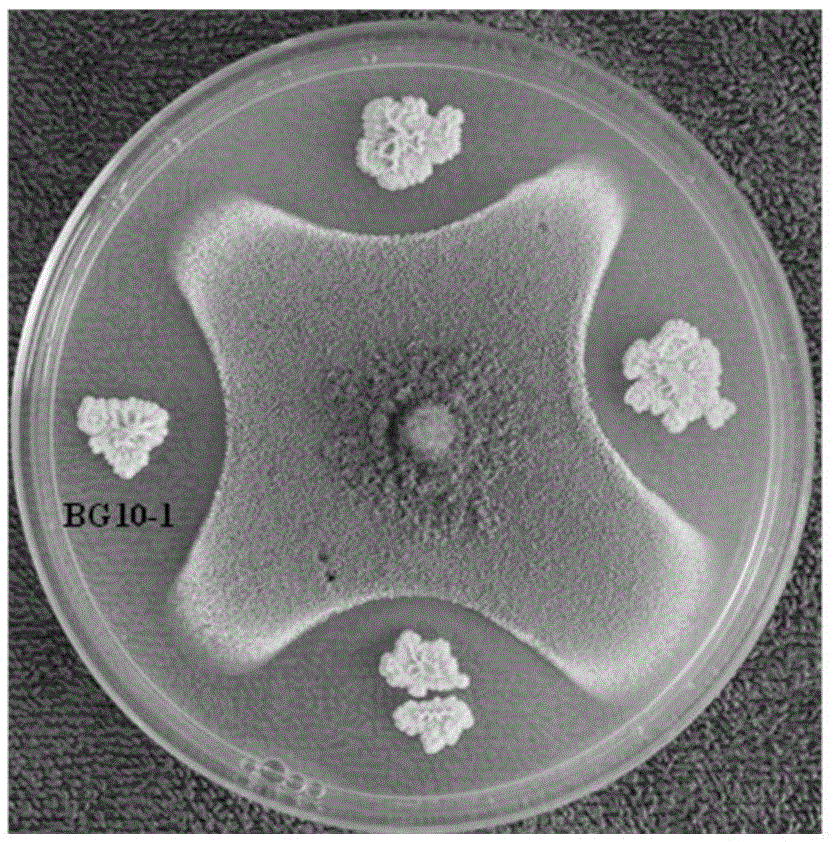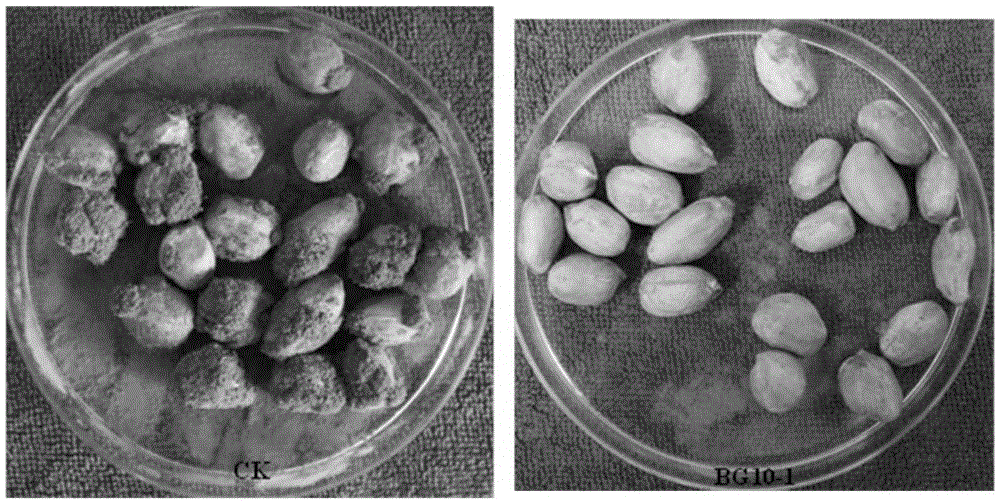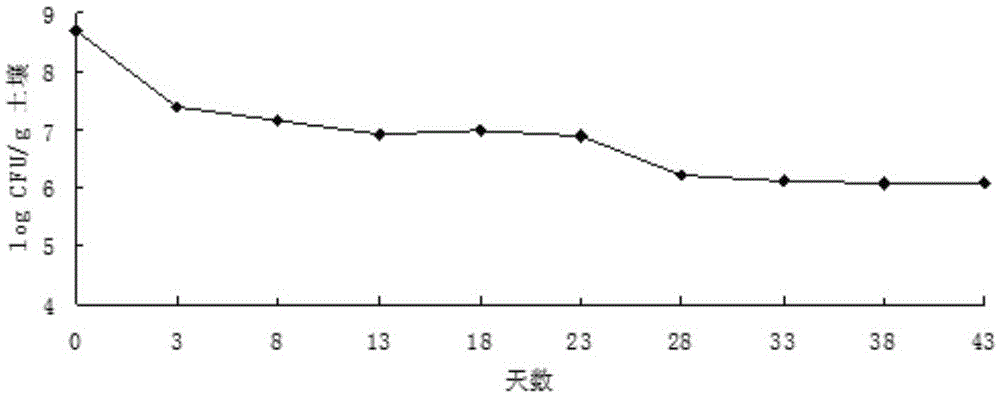Enterobacter ludwigii BG10-1 and application thereof in biological prevention and control over aspergillus flavus
A technology of Enterobacter ludwigii and Enterobacter ludwigia, which is applied to Enterobacter ludwig BG10-1 and its biological control of Aspergillus flavus, can solve the problems of Aspergillus flavus pollution and achieve pollution prevention and control , the effect of obvious antibacterial activity
- Summary
- Abstract
- Description
- Claims
- Application Information
AI Technical Summary
Problems solved by technology
Method used
Image
Examples
Embodiment 1
[0044] Example 1: Preparation of Enterobacter ludwig BG10-1 microbial fertilizer
[0045] The Enterobacter Ludwigii BG10-1 involved in the present invention has been preserved in the China Center for Type Culture Collection (CCTCC) on January 7, 2016, the preservation number is CCTCCNO: M2016014, and the classification name is Enterobacter LudwigiiBG10-1 . It was isolated and screened from peanut pods in Babu Town, Hezhou, Guangxi. Through indoor antagonism experiments and in vivo antivirus experiments, it was found that the strain has strong antibacterial effects, good and stable antibacterial and detoxification effects, easy to cultivate, no pollution, and environmentally friendly. Safety.
[0046] The biological fertilizer preparation method of Enterobacter ludwig BG10-1 bacterial strain is as follows:
[0047] 1) Inoculate Enterobacter ludwigii BG10-1 into the liquid medium for fermentation production. The conditions for fermentation production are: culture temperature 3...
Embodiment 2
[0055] The inhibitory effect of embodiment 2 metabolites to Aspergillus flavus
[0056] Preparation of Metabolites of Biocontrol Bacteria
[0057] After the biocontrol bacteria BG10-1 is activated on the LB slope, take a ring in the LB culture medium, fill in 100mL / 300mL, shake at 37°C and 160r / min for 48 hours, and prepare the following treatment solution: supernatant: The culture solution was centrifuged at 12,000 r / min for 15 minutes, and the supernatant was taken, filtered through a 0.22 μm bacterial filter to obtain a sterile supernatant.
[0058] Bacterial suspension: Centrifuge the culture solution at 12000r / min for 15min, discard the supernatant, wash with sterile water for 3 times and then centrifuge, add sterile water.
[0059] Crude protein extract: centrifuge the culture solution at 12000r / min at 4°C for 15min to discard the precipitate, add solid ammonium sulfate to the supernatant to 70% saturation, let stand overnight at 4°C, centrifuge at 10000r / min at 4°C for...
Embodiment 3
[0066] The colonization test of embodiment 3 biocontrol bacteria
[0067] Preparation of strains labeled with Rif and Nal double antibodies
[0068] Cultivate the BG10-1 strain overnight at 37°C in LB liquid medium, centrifuge at 5000rpm for 2min, collect the bacteria, spread evenly on the LB plate containing Nal antibiotics (final concentration: 50μg / mL), and culture at 35°C . When a single colony resistant to Nal grows on the plate, select a single colony with good growth and inoculate it on the LB plate containing Nal, and transfer it continuously for 3 generations. If the colony grows stably and has little difference from the wild-type strain, Then it was selected as the mutant strain induced to obtain resistance to Nal and named as BG10-1-N.
[0069] Shake-culture the mutant strain BG10-1-N overnight at 35°C on LB liquid medium containing Nal antibiotics (final concentration: 50 μg / mL), centrifuge at 5000 rpm to collect the bacteria, and spread evenly on the medium cont...
PUM
 Login to View More
Login to View More Abstract
Description
Claims
Application Information
 Login to View More
Login to View More - R&D
- Intellectual Property
- Life Sciences
- Materials
- Tech Scout
- Unparalleled Data Quality
- Higher Quality Content
- 60% Fewer Hallucinations
Browse by: Latest US Patents, China's latest patents, Technical Efficacy Thesaurus, Application Domain, Technology Topic, Popular Technical Reports.
© 2025 PatSnap. All rights reserved.Legal|Privacy policy|Modern Slavery Act Transparency Statement|Sitemap|About US| Contact US: help@patsnap.com



